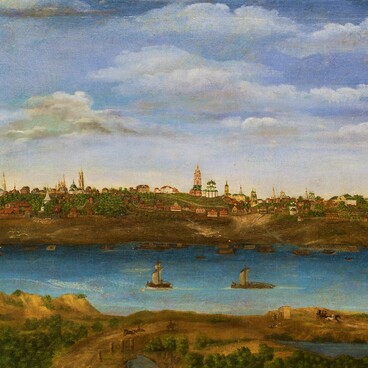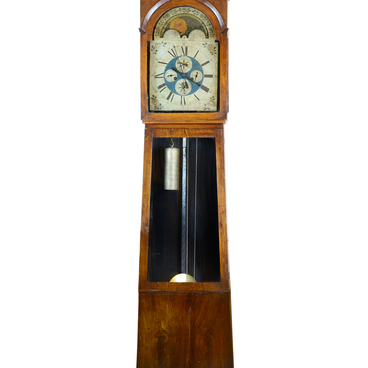The travel box, a dopp kit, came to the museum from the descendants of the merchant family, the Suzdaltsevs. The museum’s collection also contains several portraits depicting members of this merchant dynasty.
The box was made of mahogany, decorated with gilded metal, and decorated with nacre inserts. There is a mirror on the inside of the lid.
Dopp kits became popular in the 18th — 19th centuries. Travelers took compact suitcases with necessary items on long trips. They could carry personal care products, writing materials and food for a light snack. Some merchants and travelers used similar containers before that time.
The very first dopp kits were made in the form of simple wooden boxes. The requirements for them were simple: as many necessary things as possible had to fit into a minimum of space. At the same time, they were folded so that the owner could easily find them at any time.
Boxes for dopp kits, as a rule, were made of exotic woods, and the items that were transported in them were made of silver, porcelain, crystal, ivory. Often, a silk or velvet lining was used to protect fragile things. Despite the fragile materials, many dopp kits with their contents have survived to this day in good condition.
The travel boxes were of different sizes: desktop and pocket boxes. Pocket boxes in the 18th and 19th centuries often served as an additional decoration of the costume. They were worn on a special chain, chatelaine, which was attached to the belt. The dopp kit from the museum collection belongs to the first type. Murom grooms gave such travel boxes to brides on the eve of the wedding. Therefore, researchers suggest that one of the merchants of the Suzdaltsevs could also present a dressing case as a gift to his future wife.
In the exhibition, the box is presented along with its contents, various things that could be needed during the trip. Two glasses and vials with screw-down gilt lids are stored in special compartments. Additional cells and holders were intended for needlework items, threads, needles, knitting hooks and others, which women often took with them on long trips.
The box was made of mahogany, decorated with gilded metal, and decorated with nacre inserts. There is a mirror on the inside of the lid.
Dopp kits became popular in the 18th — 19th centuries. Travelers took compact suitcases with necessary items on long trips. They could carry personal care products, writing materials and food for a light snack. Some merchants and travelers used similar containers before that time.
The very first dopp kits were made in the form of simple wooden boxes. The requirements for them were simple: as many necessary things as possible had to fit into a minimum of space. At the same time, they were folded so that the owner could easily find them at any time.
Boxes for dopp kits, as a rule, were made of exotic woods, and the items that were transported in them were made of silver, porcelain, crystal, ivory. Often, a silk or velvet lining was used to protect fragile things. Despite the fragile materials, many dopp kits with their contents have survived to this day in good condition.
The travel boxes were of different sizes: desktop and pocket boxes. Pocket boxes in the 18th and 19th centuries often served as an additional decoration of the costume. They were worn on a special chain, chatelaine, which was attached to the belt. The dopp kit from the museum collection belongs to the first type. Murom grooms gave such travel boxes to brides on the eve of the wedding. Therefore, researchers suggest that one of the merchants of the Suzdaltsevs could also present a dressing case as a gift to his future wife.
In the exhibition, the box is presented along with its contents, various things that could be needed during the trip. Two glasses and vials with screw-down gilt lids are stored in special compartments. Additional cells and holders were intended for needlework items, threads, needles, knitting hooks and others, which women often took with them on long trips.



